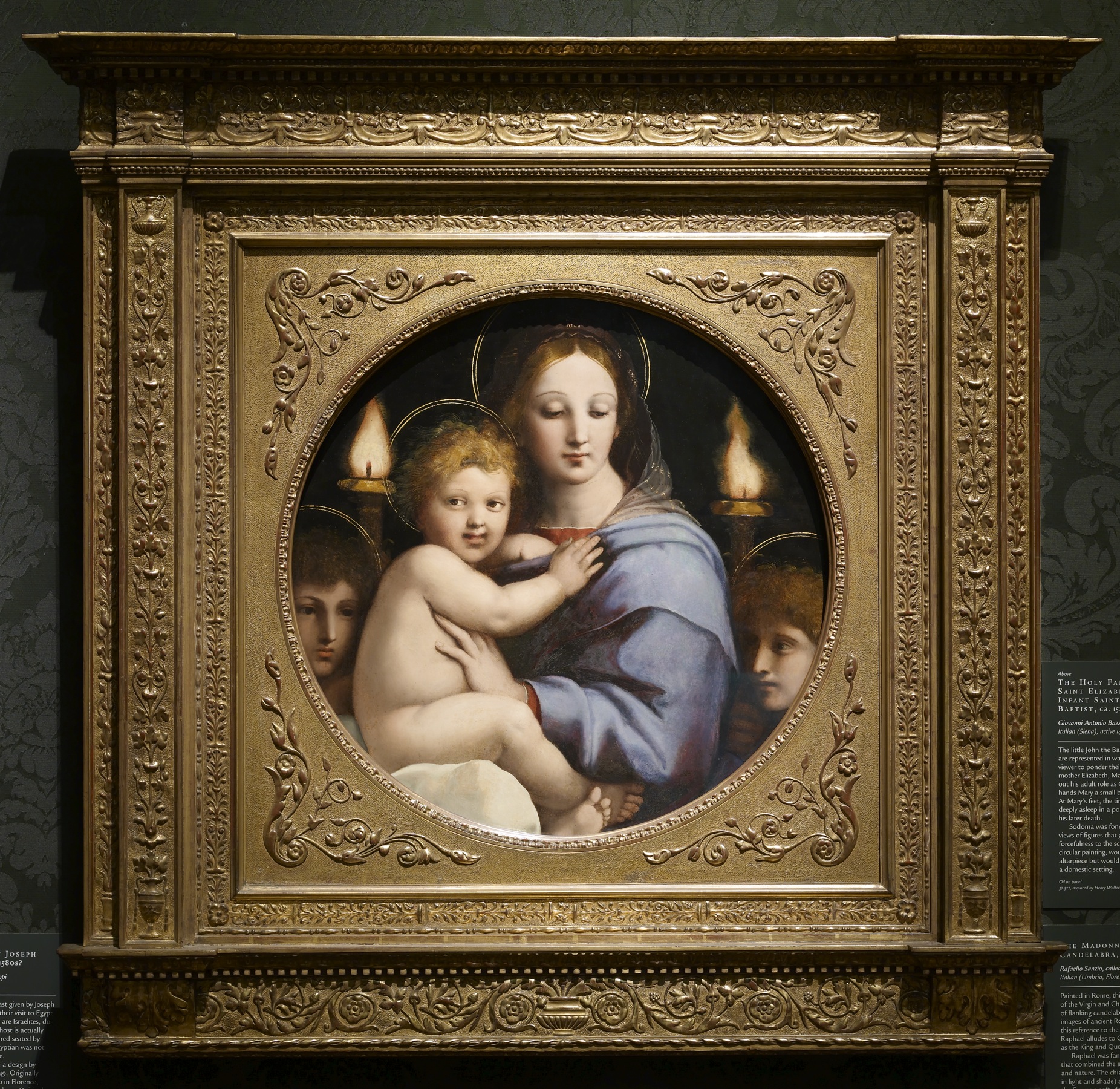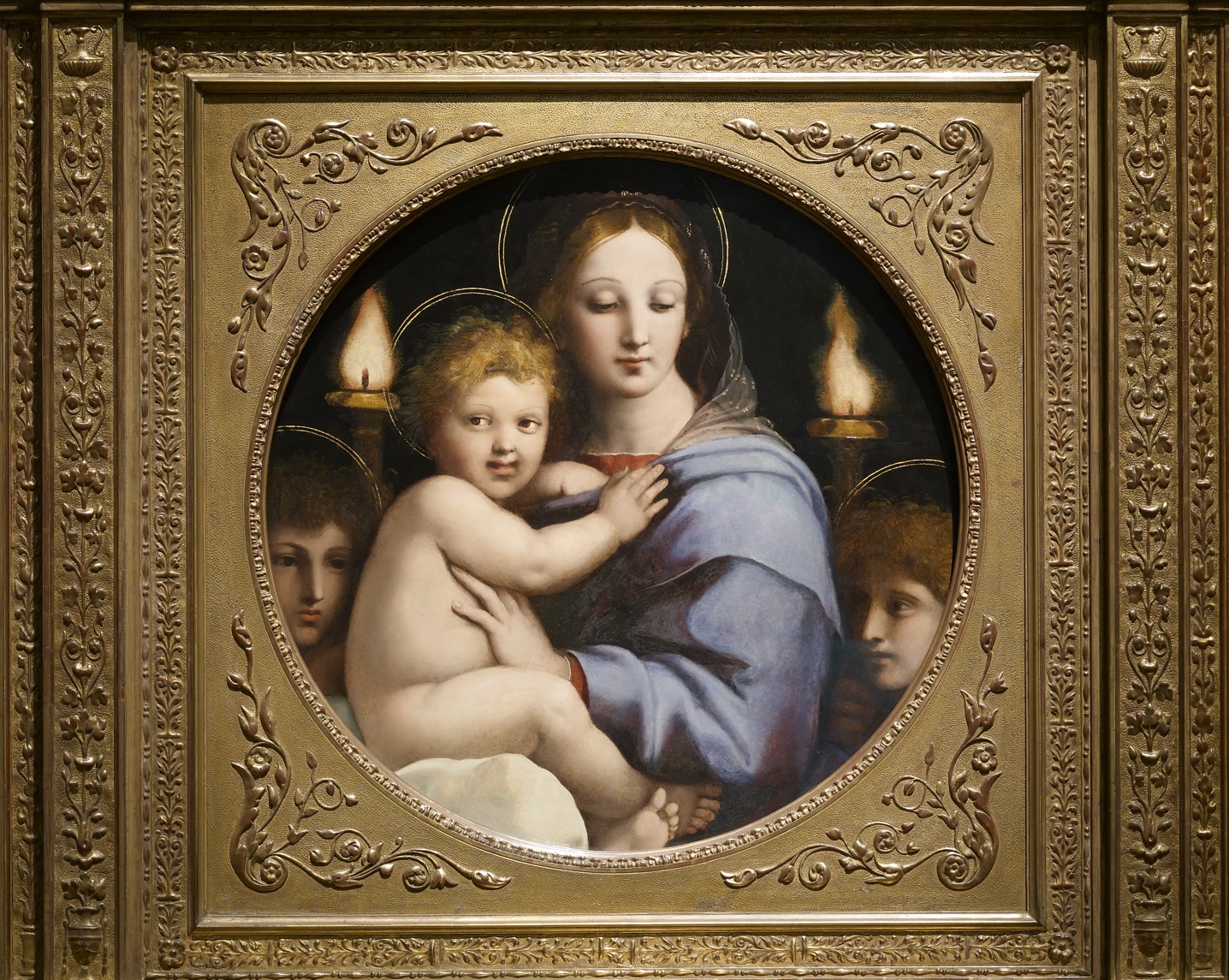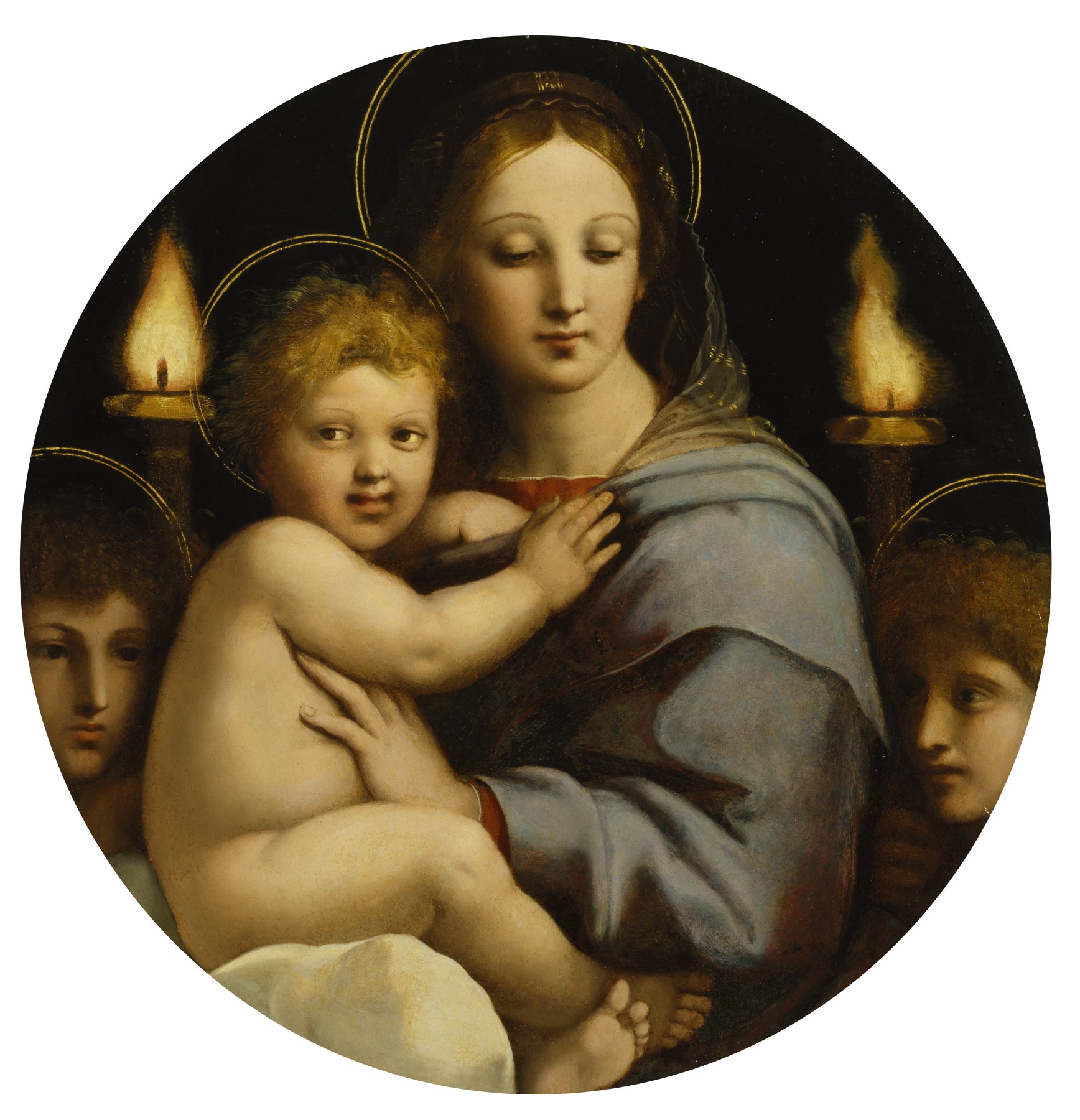Madonna of the Candelabra
(Renaissance Europe )
Painted in Rome, this tondo (circular painting) of the Virgin and Child employs a rare motif of flanking candelabra that was derived from representations of ancient Roman emperors. Through this reference to the rulers of antiquity, Raphael alludes to Christ's and Mary's roles as the king and queen of Heaven. Raphael was famed for his graceful style. which combined the study of classical sculpture and nature. The chiaroscuro effects (modeling in light and shade) and gentle coloring give the figures a soft, delicate appearance. The painting relies heavily on the participation of Raphael's workshop, and the two angels certainly were done by his assistants. This was the first Madonna painted by Raphael to enter a North American collection.
Provenance
Provenance (from the French provenir, 'to come from/forth') is the chronology of the ownership, custody, or location of a historical object.
The Princes Borghese, Palazzo Borghese, Rome, prior to 1693 [1693 inventory, Room IV, no. 45]; Sale, Rome, 1797-1799; Lucien Bonaparte, prior to 1812 [mode of acquisition unknown]; Maria Luisa, Queen of Etruria, Lucca [date of acquisition unknown], by purchase; Charles Louis, Duke of Lucca [date of acquisition unknown], by inheritance; Sale, Phillips, London, June 5, 1841, no. 51; William Buchanan, 1841 [mode of acquisition unknown]; Hugh Andrew Johnstone Munro, Novar, Scotland [date and mode of acquisition unknown]; Sale, Christie's, London, June 1, 1878, no. 153; Henry Alexander Munro Butler-Johnstone [date and mode of acquisition unknown]; Sydney Edward Bouverie-Pusey, 1882 [mode of acquisition unknown] (?) or 1884, by purchase (?); Ichenhauser, London, 1900 [mode of acquisition unknown]; Henry Walters, Baltimore, 1901, by purchase; Walters Art Museum, 1931, by bequest.
Exhibitions
| 2012-2013 | Late Raphael. Museo Nacional del Prado, Madrid; Musée du Louvre, Paris. |
| 2006 | Raffaello. Da Firenze a Rome. Galleria Borghese, Roma. |
| 2002-2004 | A Magnificent Age: Masterpieces from the Walters Art Museum, Baltimore. The Walters Art Museum, Baltimore; The Nelson-Atkins Museum of Art, Kansas City; Mint Museum of Art, Charlotte. |
| 1998-2001 | Highlights from the Collection. The Walters Art Gallery, Baltimore. |
| 1984 | The Taste of Maryland: Art Collecting in Maryland 1800-1934. The Walters Art Gallery, Baltimore. |
| 1983 | Raphael and America. National Gallery of Art, Washington. |
| 1982 | God's Minstrel: St. Francis of Assisi. The Walters Art Gallery, Baltimore. |
| 1882-1884 | Unknown Exhibition Title. The Metropolitan Museum of Art, New York. |
Conservation
| Date | Description | Narrative |
|---|---|---|
| 3/28/1957 | Examination | examined for condition |
| 6/25/1963 | Treatment | chemical analysis; cleaned; coated; filled; inpainted; surface cleaned; varnish removed or reduced; x-ray |
| 9/8/2005 | Examination | examined for loan |
| 4/29/2011 | Examination | examined for loan |
Geographies
Italy, Rome (Place of Origin)
Measurements
Painted surface H: 25 7/8 x W: 25 3/16 x D excluding cradle: 3/4 in. (65.7 x 64 x 1.9 cm); Framed H: 47 1/16 x W: 49 1/2 x D: 8 1/4 in. (119.6 x 125.7 x 21 cm)
Credit Line
Acquired by Henry Walters, 1901
Location in Museum
Accession Number
In libraries, galleries, museums, and archives, an accession number is a unique identifier assigned to each object in the collection.
In libraries, galleries, museums, and archives, an accession number is a unique identifier assigned to each object in the collection.
37.484






